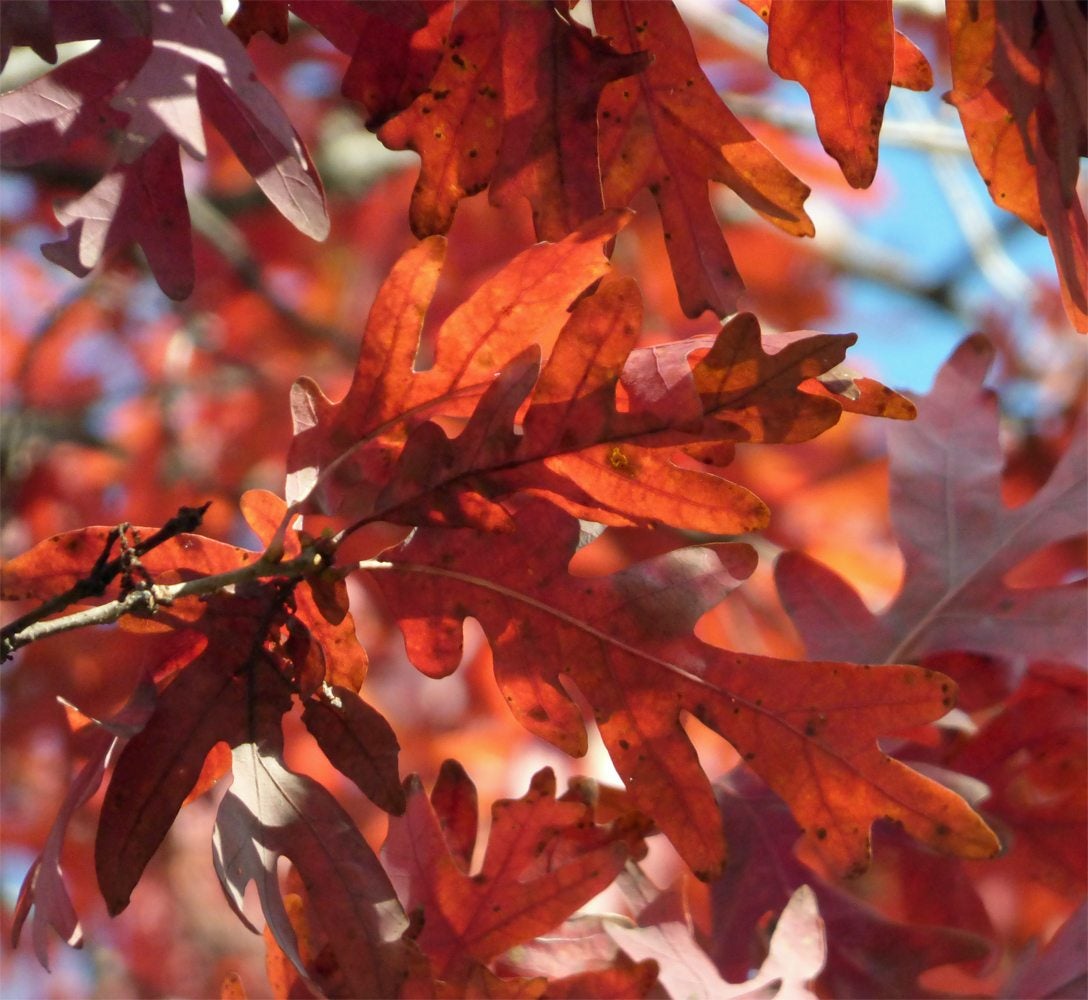Red Fall Leaves: Learn About Trees With Red Foliage In Fall


Oh, the colors of fall. Gold, bronze, yellow, saffron, orange, and, of course, red. Red fall leaves enrich the autumn palette and outfit the season in regal splendor. Numerous trees and shrubs can provide that searing scarlet or crimson cache to the home landscape. Trees that turn red in autumn span more than the lovely red maples into many more ornamental specimens. Many of these trees start out with other colors but end up a decided red, amping up the color as the season progresses, only to pop out with a thrilling, red finale.
Red Fall Leaves
Fall is one of the most beautiful and colorful seasons. It is a time for leaf maturity, but the death of the foliage is presaged by a gloriously painted landscape for several months. Many of the most colorful leaves are on the trees that turn red in autumn. Red-colored tree leaves provide a startling contrast to many of the more common colors in nature.
The drab browns, humdrum grays and blacks, and non-descript greens of the average landscape are suddenly transformed by a wild slash of intense fiery color. Adorn your landscape with trees with red fall foliage and make your garden the talk of the town.
Getting red fall leaves takes some pre-planning. While many trees have a successive color display that ends up red, having red leaves the entire season only happens to a few species. Graduated color displays are often some of the best, however, and if the ultimate result is some form of ruby, crimson, or burgundy, then it was worth the wait.
Some of the best trees for graduated displays that finalize in a red hue might be Downy serviceberry, blackgum, persimmon, and sassafras. The hues and tones of red vary from species to species. 'Raywood' ash has been described as having claret-colored foliage while 'Eddies White Wonder' dogwood has been labeled strawberry red. Each tone in the family has a delicious difference while still screaming 'red.'
What Causes Red Colored Tree Leaves?
In fall, as a tree begins to go dormant, the supply of chlorophyll running through the tree and its leaves begins to be blocked off. The lack of chlorophyll causes color changes in the leaves. Chlorophyll masks the other colors in the leaf and is usually the predominant color seen visually. When the green is not present, the other colors shine through.
Red fall leaves are caused by a pigment called anthocyanin, which also causes purple hues. These anthocyanins are produced by sugars trapped in leaves in the fall. Unlike the other main plant pigments, anthocyanins are not present in most plants during the growing season. This can be confusing until you focus on the word "most."
Sign up for the Gardening Know How newsletter today and receive a free copy of our e-book "How to Grow Delicious Tomatoes".
Red maples and several other plants have naturally occurring anthocyanins and red-colored tree leaves at any time of the year.
Trees That Turn Red in Autumn
If you are captivated by the maroons, crimson, and cherry reds of fall, a list of trees with red fall foliage will help you as you search for that autumn color. The classic, red maples seem to just get richer tones of red as the weather cools, while red oaks get a deeper wine-colored red. Other trees with tones of red are:
Each one of these will produce an amazing red fall spectacle while providing other types of seasonal beauty year-round.

Bonnie Grant is a professional landscaper with a Certification in Urban Gardening. She has been gardening and writing for 15 years. A former professional chef, she has a passion for edible landscaping.